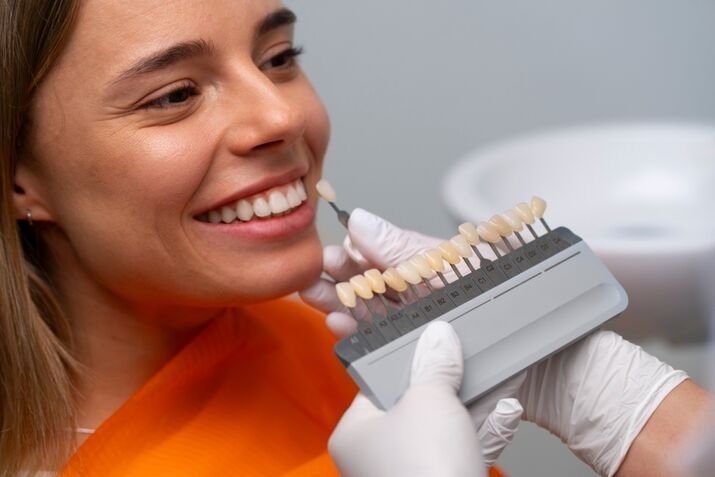Common Tools and Instruments in Dental Practice

Essential Dental Drills
Dental drills are fundamental instruments in dental practice. Also known as dental handpieces, they serve multiple purposes including drilling holes in teeth for fillings, removing decay, polishing fillings, performing cosmetic dentistry, and altering prostheses. These tools are among the most essential in providing effective dental care (Gaston Dental Associates).

Purpose and Function
The primary function of dental drills is to facilitate various procedures that require precision and speed. They enable dentists to remove decayed tissue, shape cavities for fillings, and perform intricate cosmetic procedures. Dental drills come equipped with various features designed to increase efficiency and accuracy. Typically, they consist of components such as:
Types of Dental Drills
There are primarily two types of dental drills used in modern practice: electric drills and turbine-powered drills. Each type has its advantages, making them suitable for different dental applications.
Type of Dental DrillPower SourceSpeed (rpm)CharacteristicsElectric DrillsElectric motorConstant speedControlled torque, less heat, suitable for various tasks.Turbine-Powered DrillsCompressed airUp to 180,000Fast and powerful, ideal for rapid procedures.
Turbine-powered drills are the fastest and can rotate the drill head at incredibly high speeds, making them effective for quick tasks. On the other hand, electric drills offer a constant speed and are easier to manage in procedures that require precision.
Understanding the types and functionalities of dental drills is crucial for anyone interested in learning about the common tools and instruments used by dentists. Each type is tailored to specific needs, ensuring effective and efficient dental treatments.
Exploration Tools
In dental practice, exploration tools are vital for thorough examinations and accurate diagnoses. These instruments allow dentists to inspect, identify, and address various oral health issues. Key exploration tools include dental mirrors, dental explorers and probes, and scalers.
Dental Mirrors
Dental mirrors are essential instruments in dentistry. They consist of a small circular mirror on one end, which aids dentists in thoroughly checking every small area in the oral cavity during exams, fillings, and cleanings (Dr. DeAngelo DDS). These mirrors serve multiple purposes:
Type of Dental MirrorDescriptionPlane MirrorProvides a flat reflectionConcave MirrorProvides a magnified image
The use of dental mirrors not only improves visibility but also contributes to better patient outcomes by facilitating faster detection of problems like cavities and gum disease (iDentals India).
Dental Explorers and Probes
Dental explorers and probes are commonly utilized during routine appointments. These tools help dentists detect plaque, cavities, and assess the condition of restorations. One specific type of probe, the periodontal probe, measures gum health with small rings marked in millimeter increments. By utilizing these instruments, dentists can:
Scalers
Scalers, similar in appearance to dental explorers, are critical for maintaining oral health. These instruments are designed to remove plaque, tartar, and calculus buildup from teeth, which can contribute to serious oral health issues such as cavities and gum disease (Dr. DeAngelo DDS). Scalers assist in:
Regular use of exploration tools like dental mirrors, explorers, probes, and scalers underscores their importance in maintaining oral health. For a comprehensive understanding of these and other instruments, explore our section on common tools and instruments used by dentists.
Oral Cavity Examination
In the realm of dentistry, oral cavity examination is integral for maintaining patient health. Among the tools utilized in this phase are suction devices and dental polishers, which play vital roles in the cleanliness and presentation of the teeth.
Suction Devices
A suction device is essential in dental practice. This tool aids in keeping the patient's mouth clean by removing saliva, water, tartar, and debris during procedures. By efficiently eliminating these substances, suction devices enhance the effectiveness of dental work and help prevent accidental swallowing (Dr. DeAngelo DDS).
FeatureDescriptionFunctionRemoves fluids and debris from the mouthTypesHigh-volume evacuators, saliva ejectorsEfficiencyMaintains a clear field for dental work
Dental Polishers
During professional cleanings, dentists frequently use dental polishers. A dental polisher typically consists of a small stainless-steel wand that spins like an electric toothbrush. This tool is coupled with a prophy cup filled with polishing paste. The result is an effective removal of plaque and a thorough cleaning of the tooth surface.
FeatureDescriptionPurposeCleans and polishes tooth surfacesComponentsStainless-steel wand, prophy cup, polishing pasteBenefitsEnhances the appearance of teeth, removes stains
These instruments are just a part of the array of common tools and instruments used by dentists, providing vital functions that contribute to effective dental care and improving the overall health of patients' smiles.
Evolution of Dental Drills
The evolution of dental drills has played a crucial role in enhancing the effectiveness and comfort of dental procedures. This section highlights the historical development of dental drills and modern innovations that continue to shape their use in dental practice.
Historical Overview
The dental drill has a storied history, beginning with the invention of the first mechanical drill by George Fellows Harrington in 1868. This innovation revolutionized dentistry by providing a mechanism for more precise and efficient tooth preparation. The early design featured a pedal-operated mechanism that rotated a burr at high speeds, allowing dentists to work more effectively (Dental Home AZ).
As dental technology advanced, electric-powered drills emerged in the early 20th century. These drills significantly improved procedures by making them quicker and reducing the physical strain on dentists. By utilizing motors to generate rotary motion, these electric drills enhanced precision and speed in dental treatments.
YearDevelopment1868Invention of the first mechanical dental drill by George Fellows HarringtonEarly 1900sIntroduction of electric dental drills, enhancing performancePresent DayUse of high-speed air turbine handpieces for efficient cutting
Modern Innovations
Modern dental drills have seen significant advancements. High-speed air turbine handpieces are now commonly used in dental practices due to their ability to achieve faster cutting speeds with minimal vibration. These handpieces consist of several components, including a handpiece, bur or drill bit made from materials like tungsten carbide or diamond, and systems for air and water delivery to maintain cooling and visibility during procedures (Dental Home AZ).
In recent years, laser technology has become a noteworthy alternative to traditional mechanical drilling. Lasers offer precise cutting capabilities and reduce pain and discomfort for patients, marking a significant shift in how dental work is performed. This innovation represents ongoing improvements in dental tools and instruments, contributing to better patient experiences and outcomes.
The history and advancements of dental drills reflect broader trends in the evolution of common tools and instruments used by dentists, enhancing both the efficiency of dental procedures and patient comfort.
Advanced Dental Instruments
The advancements in dental technology have led to the development of superior instruments that enhance the quality of dental care. Two notable examples include laser technology and ultrasonic scalers, which have transformed dental practices.
Laser Technology
Laser technology has made significant inroads into dentistry. This advanced tool provides precise cutting capabilities, offering an alternative to traditional mechanical drills. With the use of lasers, dental practitioners can perform various procedures with greater accuracy while reducing pain and discomfort for patients (Dental Home AZ).
Lasers are particularly effective in soft tissue procedures, such as gum contouring and the treatment of periodontal disease. They can minimize bleeding and swelling, leading to faster recovery times. Additionally, lasers may help in treating cavities by selectively targeting decayed areas without affecting healthy tissue.
The following table summarizes some applications of laser technology in dentistry:
ApplicationBenefitsSoft Tissue SurgeryPrecise and minimally invasiveCavity TreatmentReduces need for anesthesiaTeeth WhiteningEnhances efficacy of whitening agents
Ultrasonic Scalers
Ultrasonic scalers are another essential tool in modern dental practices. These machines are effective for deep cleaning teeth, as they remove calculus deposits both on the tooth surface and beneath the gum line without damaging the roots.
The ultrasonic scaler uses high-frequency vibrations to break apart plaque and tartar, ensuring a comprehensive clean with minimal discomfort for patients. This method is particularly beneficial for individuals with periodontal disease as it allows for thorough cleaning.
The following table details the advantages of using ultrasonic scalers:
AdvantageDescriptionEfficientRemoves both surface and subgingival calculus effectivelyHygienicReduces bacteria in the mouth during cleaningComfortableTypically causes less discomfort than manual scaling
Although the utilization of ultrasonic scalers is growing, proper disinfection conditions are critical to ensure safe and effective tooth scaling (Refine Med). They are seen as convenient and comfortable tools for dental professionals, with applications in both clinical settings and personal dental care routines.
For more insights on dental tools used during assessments, explore the section on common tools and instruments used by dentists.
Periodontal Health Assessment
Maintaining the health of gums and surrounding tissues is critical in dentistry. Periodontal health assessment employs specific tools to evaluate the condition of gums and detect any potential issues.
Periodontal Probing Tools
A key instrument in periodontal health assessment is the periodontal probe. This tool functions similarly to a measuring stick for gums, allowing dentists to measure the depth of gum pockets accurately. Periodontal probes are typically equipped with black tick marks for each millimeter, making it easier for practitioners to assess pocket depth during examinations.
Probe FeatureDescriptionLengthUsually ranging from 12mm to 15mmThicknessTypically between 0.5mm to 1mmMaterialStainless steel or plastic for hygiene and durability
Dentists carefully insert the probe into the gum pockets to measure depth. In a healthy mouth, periodontal pockets usually measure between 1-3 millimeters. If a pocket exceeds 4mm, professional treatment is necessary to prevent bacteria from spreading further, which can lead to deeper pockets, inflammation, and possible tooth loss.
Importance of Periodontal Probing
Periodontal probing, also known as periodontal measurements, is essential for assessing the health of gums and the surrounding tissue. This assessment aids dental professionals in determining the best course of treatment, whether it be preventative care or more intensive procedures. If probing indicates pockets of 4mm or deeper, immediate action is required to prevent worsening conditions, which can lead to infections and tooth loss.
During a dental visit, the probing process is crucial for
Proper maintenance and sterilization of probing tools are essential to ensure safety and reliability. Keeping these instruments clean helps maintain their longevity and effectiveness in providing accurate assessments, similar to other tools like dental mirrors used in diagnostics. This practice highlights the importance of employing common tools and instruments used by dentists effectively in maintaining oral health.










.jpg)


















.avif)


















.jpg)


























.jpg)























